Abstract
Two hundred and three recent clinical isolates of enterococci were tested for susceptibility to streptomycin, kanamycin, amikacin, gentamicin, sisomicin, and tobramycin. Depending upon the source of the isolate, 36 to 54% of the enterococci demonstrated high-level resistance (minimal inhibitory concentration, >2,000 μg/ml) to streptomycin, 16 to 49% to kanamycin, and 0 to 14% to amikacin. None of the strains was highly resistant to gentamicin, sisomicin, or tobramycin. A comparison with isolates of enterococci obtained in 1968 revealed that there has been a decrease in prevalence of high-level resistance among organisms isolated from wound cultures in 1976. However, no decrease in resistance to streptomycin or kanamycin was demonstrated among blood or urine isolates. Penicillin, combined with gentamicin, sisomicin, or tobramycin, was synergistic against all 10 strains of Streptococcus faecalis subjected to formal testing. For streptomycin and kanamycin, the presence or absence of synergism with penicillin correlated with the absence or presence of high-level aminoglycoside resistance. High-level resistance to amikacin was seen in only 1 of the 10 strains. Nonetheless, combinations of penicillin plus amikacin failed to produce synergistic killing against 6 of the 10 strains. Indeed, the combination was synergistic only against those four strains that were susceptible to high levels of kanamycin.
Full text
PDF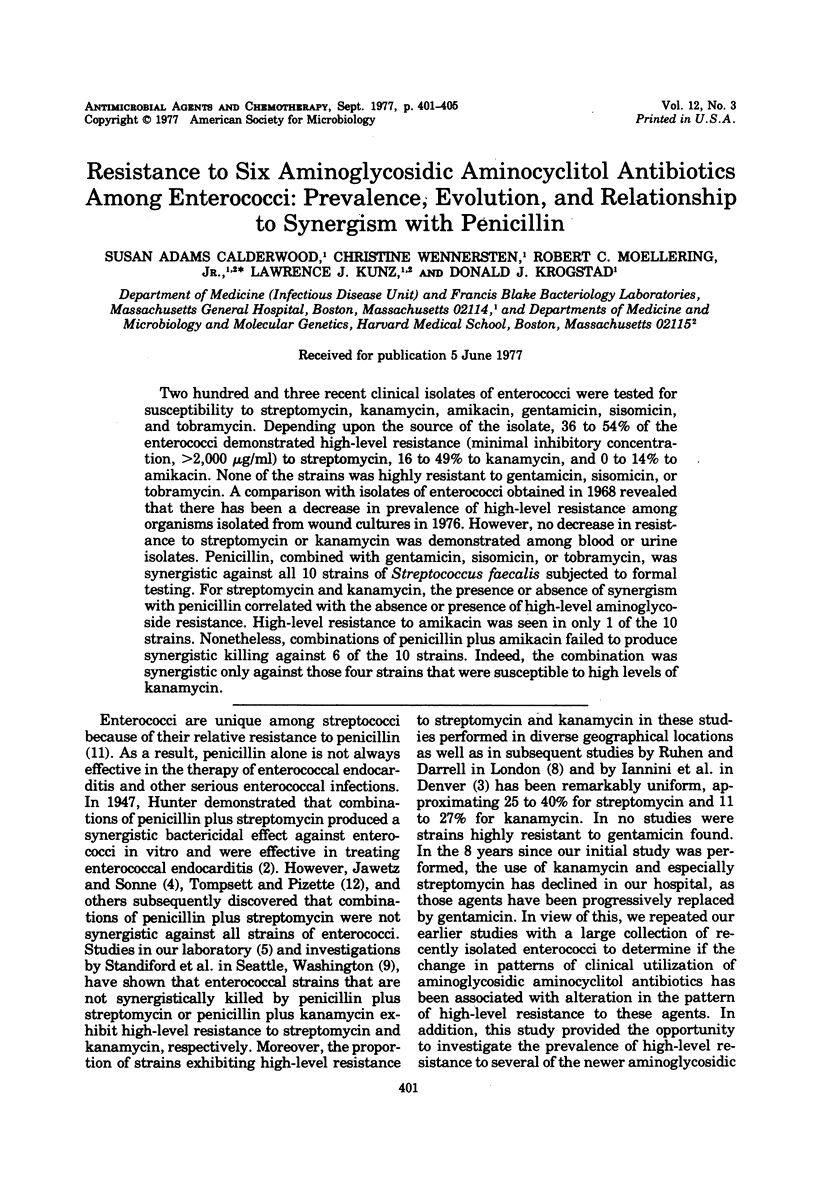
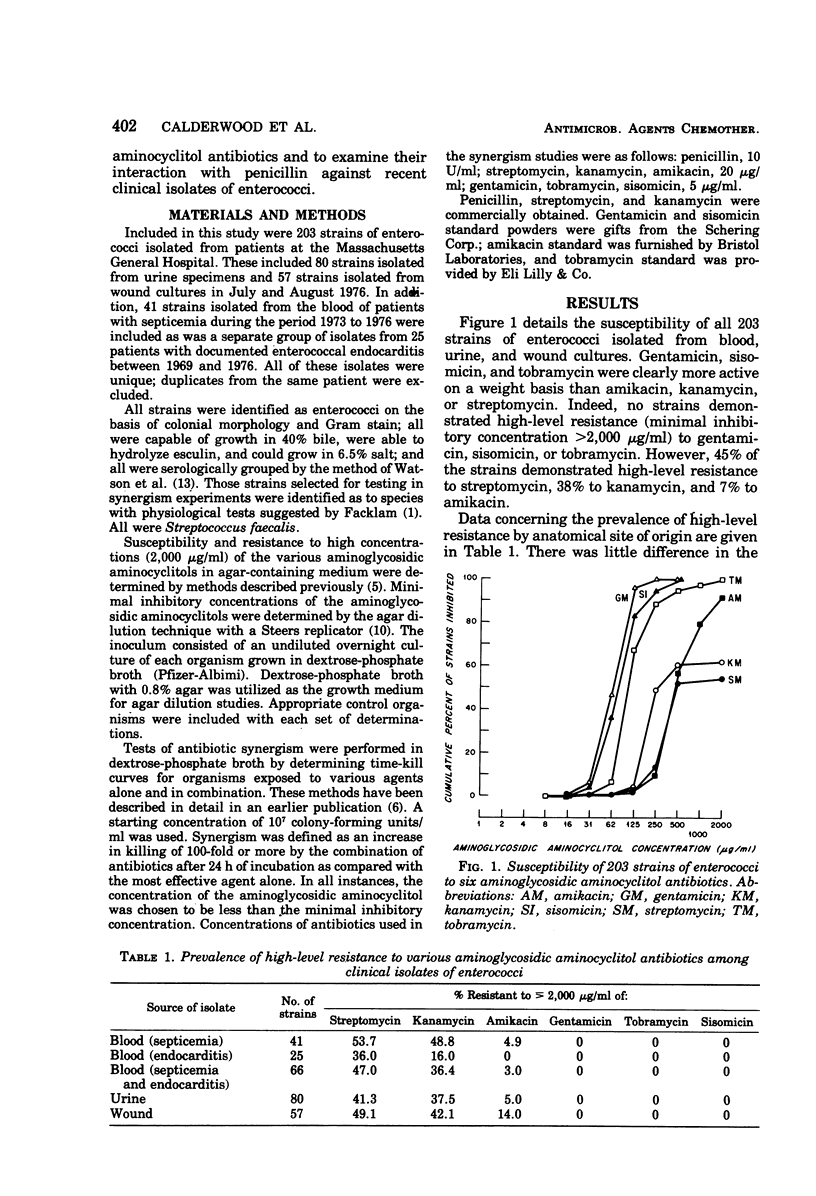
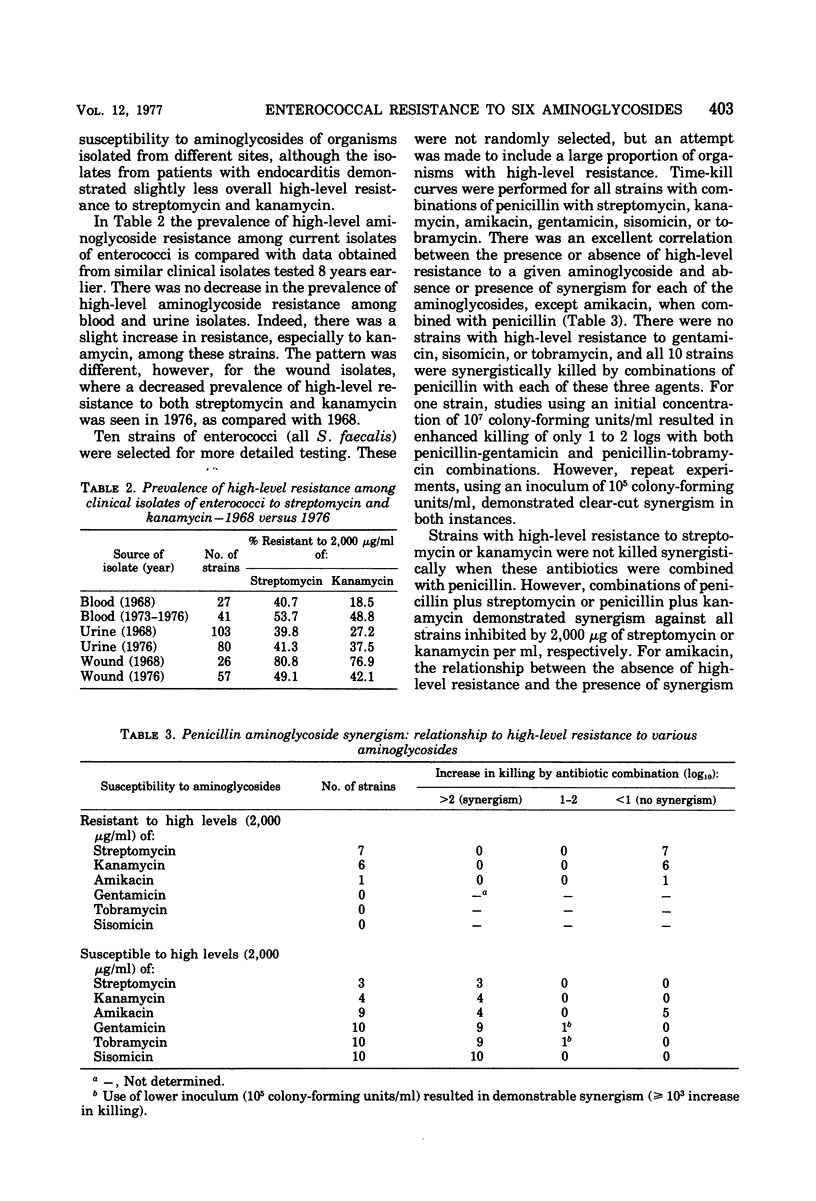
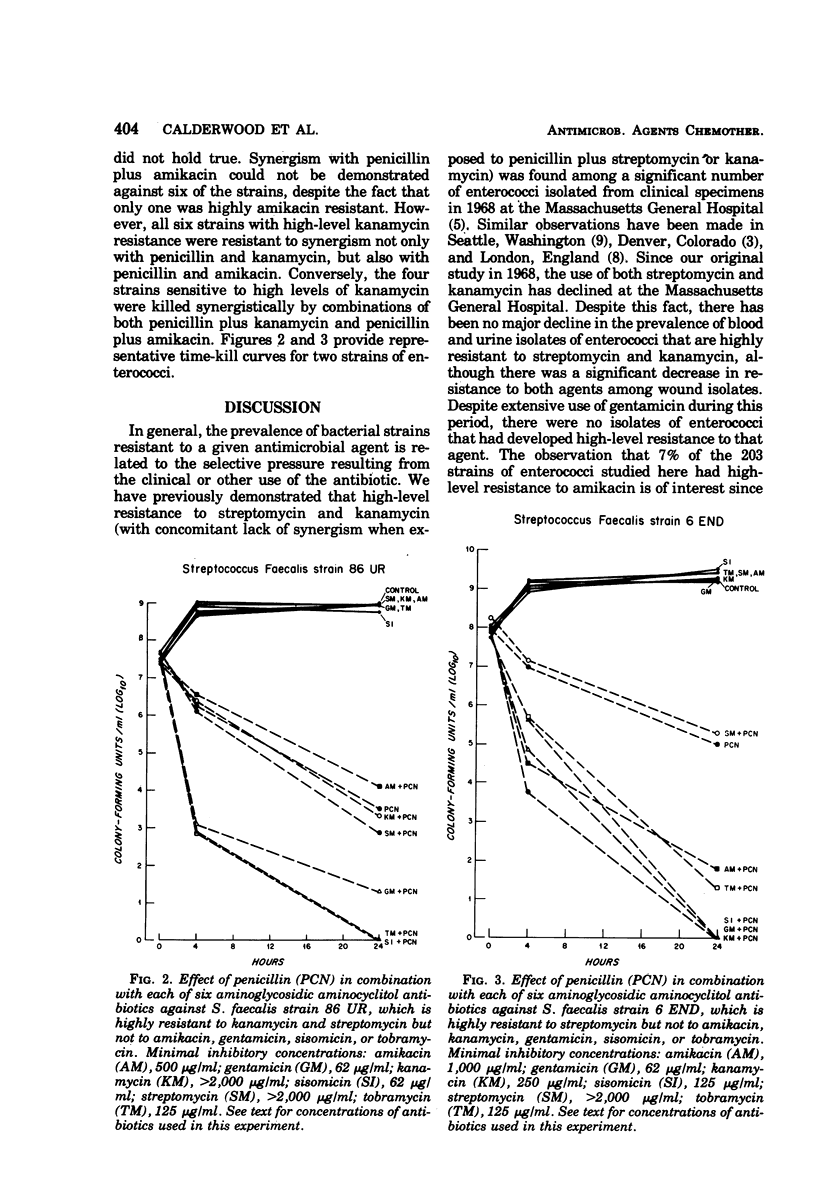
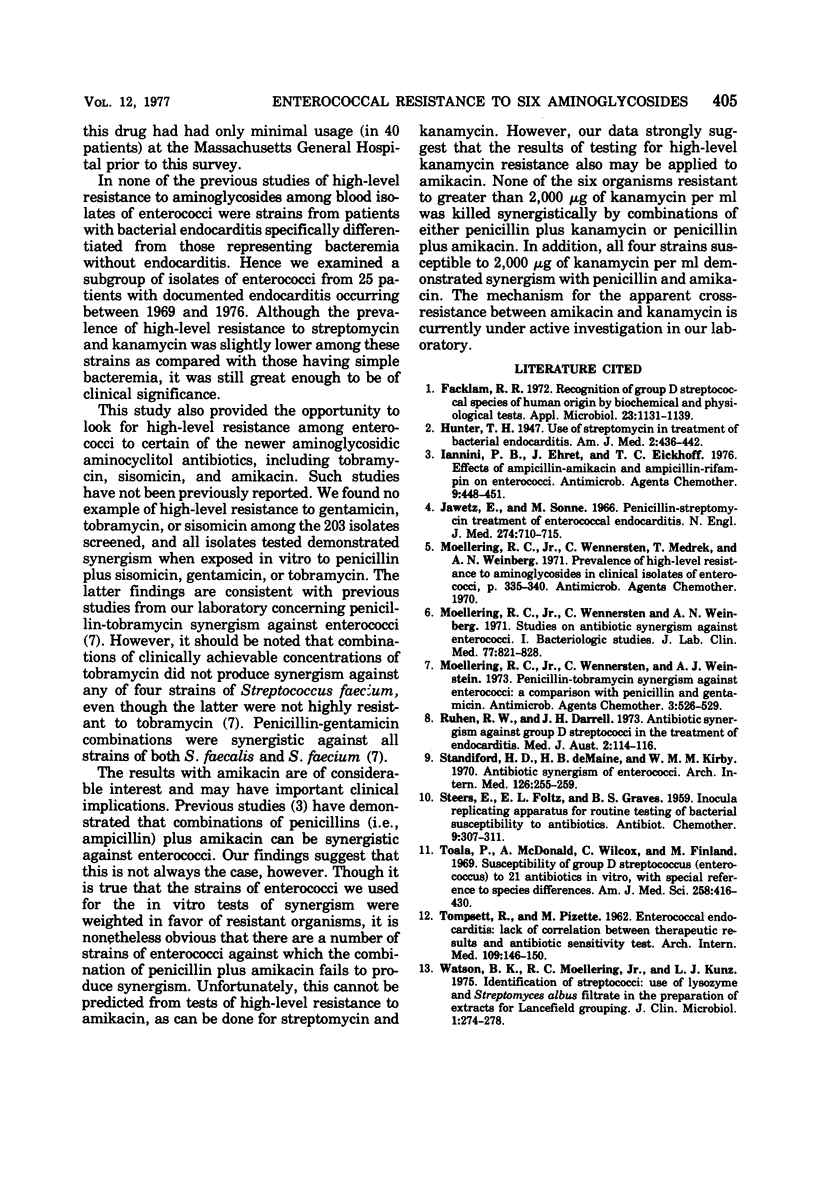
Selected References
These references are in PubMed. This may not be the complete list of references from this article.
- Facklam R. R. Recognition of group D streptococcal species of human origin by biochemical and physiological tests. Appl Microbiol. 1972 Jun;23(6):1131–1139. doi: 10.1128/am.23.6.1131-1139.1972. [DOI] [PMC free article] [PubMed] [Google Scholar]
- Iannini P. B., Ehret J., Eickhoff T. C. Effects of ampicillin-amikacin and ampicillin-rifampin on enterococci. Antimicrob Agents Chemother. 1976 Mar;9(3):448–451. doi: 10.1128/aac.9.3.448. [DOI] [PMC free article] [PubMed] [Google Scholar]
- Jawetz E., Sonne M. Penicillin-streptomycin treatment of enterococcal endocarditis. A re-evaluation. N Engl J Med. 1966 Mar 31;274(13):710–715. doi: 10.1056/NEJM196603312741304. [DOI] [PubMed] [Google Scholar]
- Moellering R. C., Jr, Wennersten C., Weinberg A. N. Studies on antibiotic synergism against enterococci. I. Bacteriologic studies. J Lab Clin Med. 1971 May;77(5):821–828. [PubMed] [Google Scholar]
- Moellering R. C., Jr, Wennersten C., Weinstein A. J. Penicillin-tobramycin synergism against enterococci: a comparison with penicillin and gentamicin. Antimicrob Agents Chemother. 1973 Apr;3(4):526–529. doi: 10.1128/aac.3.4.526. [DOI] [PMC free article] [PubMed] [Google Scholar]
- Ruhen R. W., Darrell J. H. Antibiotic synergism against group D streptococci in the treatment of endocarditis. Med J Aust. 1973 Jul 21;2(3):114–116. doi: 10.5694/j.1326-5377.1973.tb128693.x. [DOI] [PubMed] [Google Scholar]
- Standiford H. D., De Maine J. B., Kirby W. M. Antibiotic synergism of enterococci. Relation to inhibitory concentrations. Arch Intern Med. 1970 Aug;126(2):255–259. [PubMed] [Google Scholar]
- Toala P., McDonald A., Wilcox C., Finland M. Susceptibility of group D streptococcus (enterococcus) to 21 antibiotics in vitro, with special reference to species differences. Am J Med Sci. 1969 Dec;258(6):416–430. doi: 10.1097/00000441-196912000-00006. [DOI] [PubMed] [Google Scholar]
- Watson B. K., Moellering R. C., Jr, Kunz L. J. Identification of streptococci: use of lysozyme and Streptomyces albus filtrate in the preparation of extracts for Lancefield grouping. J Clin Microbiol. 1975 Mar;1(3):274–278. doi: 10.1128/jcm.1.3.274-278.1975. [DOI] [PMC free article] [PubMed] [Google Scholar]


